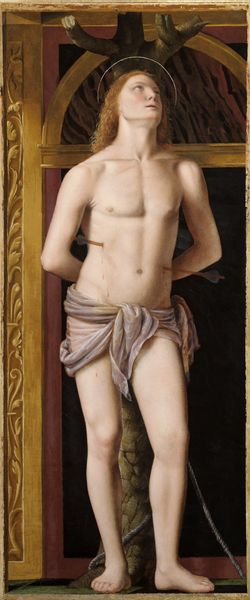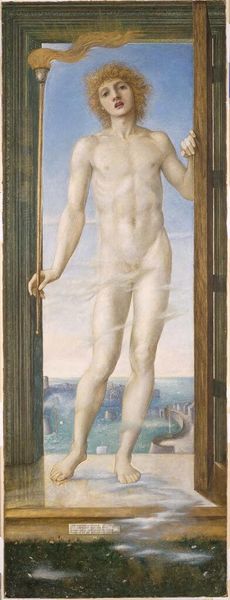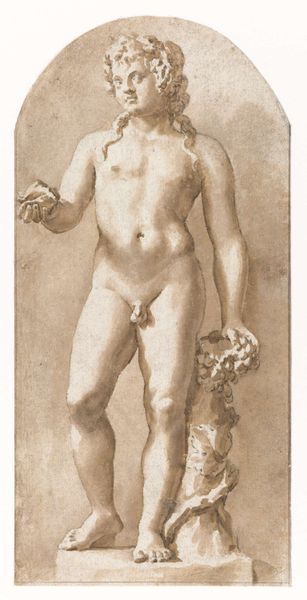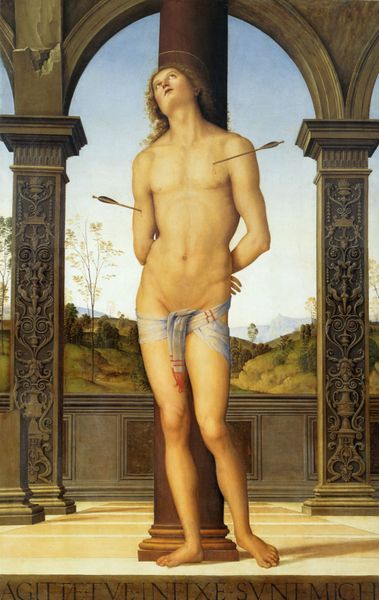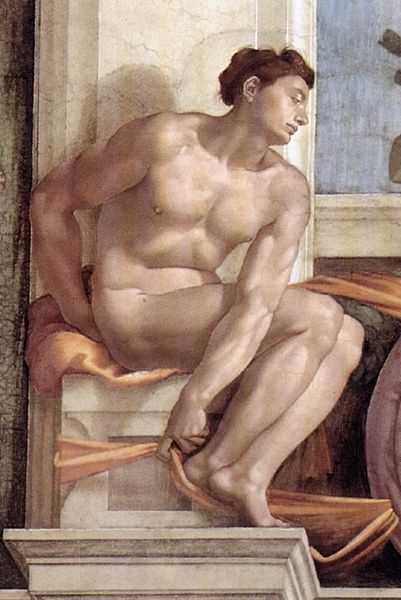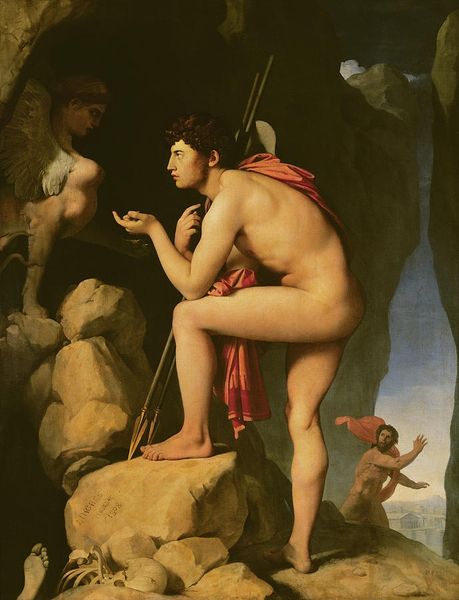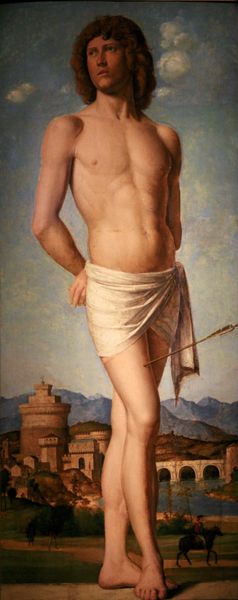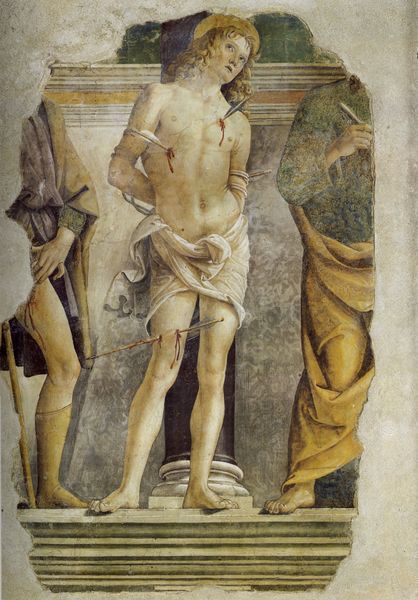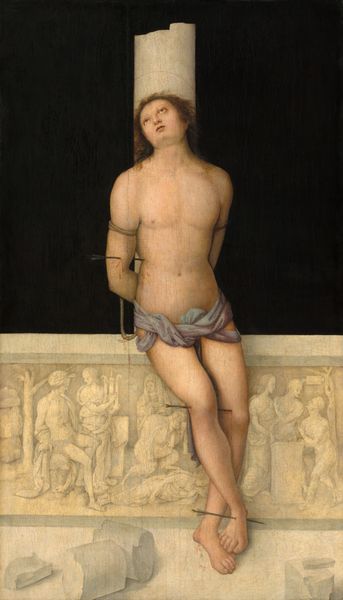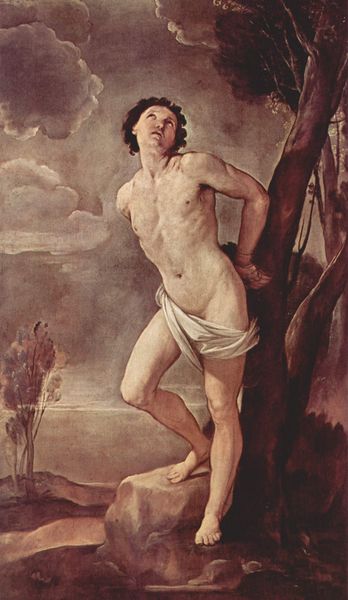
oil-paint
#
portrait
#
allegory
#
oil-paint
#
figuration
#
oil painting
#
christianity
#
men
#
genre-painting
#
history-painting
#
academic-art
#
italian-renaissance
#
nude
Dimensions: 85.5 x 171 cm
Copyright: Public domain
Antonello da Messina’s "St. Sebastian" was painted during the Italian Renaissance, a period of renewed interest in classical antiquity alongside the rise of humanism. Here, St. Sebastian is depicted nearly nude, save for a loincloth, tied to a tree in an urban piazza. The beauty of the male form, in Sebastian's body, contrasts starkly with his violent persecution as a Christian martyr. The image reflects a cultural tension between religious piety and a burgeoning appreciation for secular aesthetics. We see him as an object of both reverence and erotic contemplation. This portrayal is a window into the complex relationships between faith, sexuality, and artistic expression in Renaissance Italy. The wounds all over Sebastian’s body are symbols of pain, yet they also create a topography of visual interest. The painting invites us to meditate on the capacity for resilience, even in the face of profound suffering. It serves as a reminder of the intertwined nature of pain and beauty, faith and doubt, in the human experience.
Comments
No comments
Be the first to comment and join the conversation on the ultimate creative platform.

